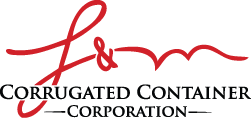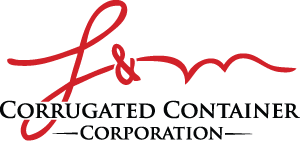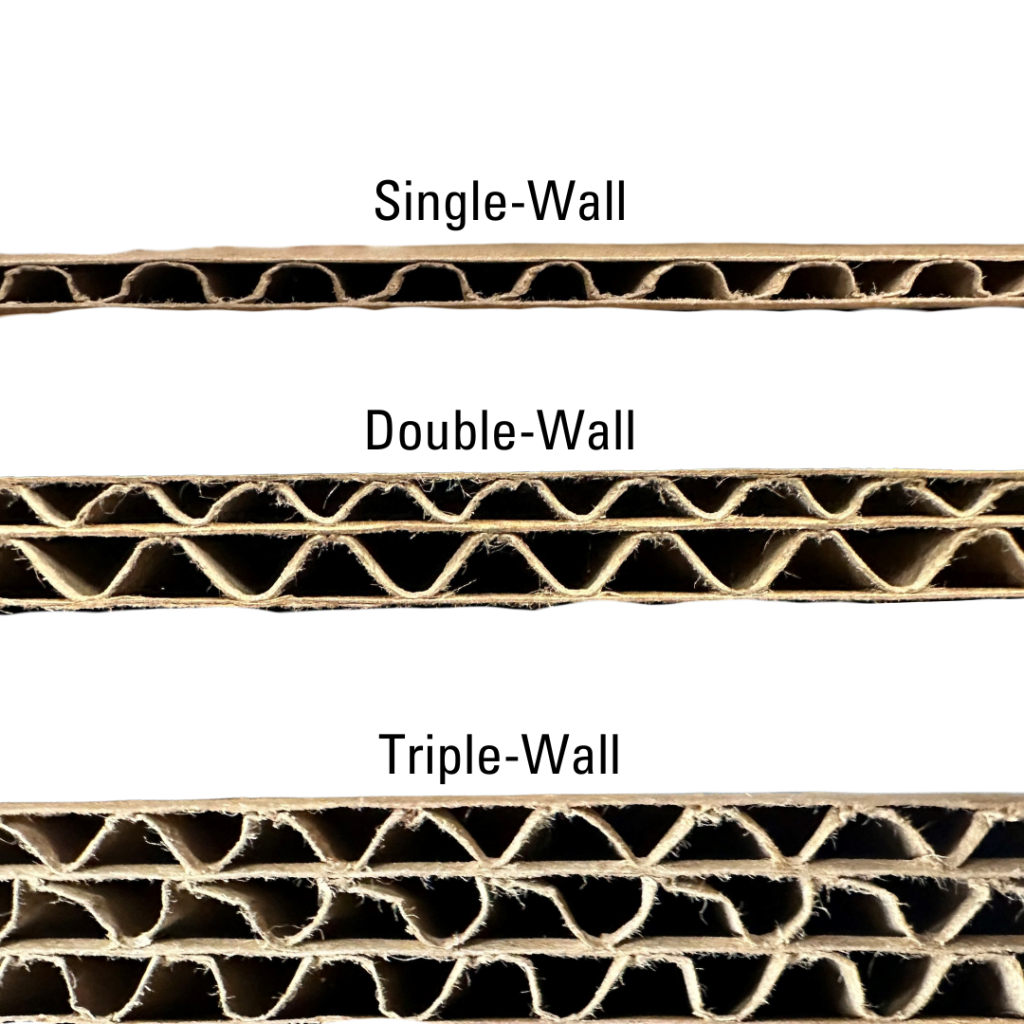When most people think of a box, they think “cardboard box,” not “corrugated box.” The terms are often used interchangeably, even though cardboard and corrugated boxes aren’t exactly the same. Understanding these differences can help you make smarter decisions whether it’s for your business or personal packaging needs.
Let’s take a look at what makes these materials different!
What is Cardboard?
Cardboard is a catch-all term that refers to heavy, paper-based materials. The most common form of cardboard is one layer of thick paper known as paperboard which is easy to cut and bend.
Because of its flexibility, cardboard is often used for arts and crafts projects, to make playing cards and greeting cards, and to back notebooks. It’s also used in retail packaging for things like cereal boxes. Cardboard is best for lightweight items that don’t need much protection.
What is Corrugated?
Corrugated is made up of multiple alternating layers: one or more flat layers (linerboard) and a wavy layer (fluting) making it thicker than cardboard. The fluted layer strengthens the board and helps to better protect the box’s contents.
Corrugated is the go-to material in the shipping and packaging industry and is used to package many electronics and other consumer goods. So, if you’ve ordered something online, it likely came in a corrugated box.
Types of corrugated board:
Different types of corrugated board can be used to make boxes. Some of them are…
- Single Face: One sheet of linerboard and one sheet of fluting.
- Single Wall: Two sheets of linerboard and one sheet of fluting.
- Double Wall: Three sheets of linerboard and two sheets of fluting.
- Triple Wall: Four sheets of linerboard and three sheets of fluting.
Important Differences:
| Cardboard | Corrugated | |
| Structure | Flat and smooth, with no fluted layer. | Has a wavy, fluted layer that adds strength. |
| Durability | Best for lightweight products that don’t require much protection. | Much stronger and can withstand more pressure and stress making it a good choice for protecting fragile items. |
| Uses | Frequently used for arts and crafts, and other things like playing cards, retail packaging, greeting cards, and notebook backs. | Primarily used for shipping, consumer packaging, retail displays, and other things that need to be protected during shipping. |
| Costs | Generally, cheaper because it’s thinner, easier to make, and uses fewer materials. | Typically costs more because there are more layers making production more complex. |
In short, knowing the difference between cardboard and corrugated boxes can make a big difference in how you package and ship your items. When you’re packing or shipping items, especially fragile ones, corrugated is the way to go as it offers better protection. Not to mention that with a variety of corrugated options available, you can easily find the perfect fit for your specific needs.



